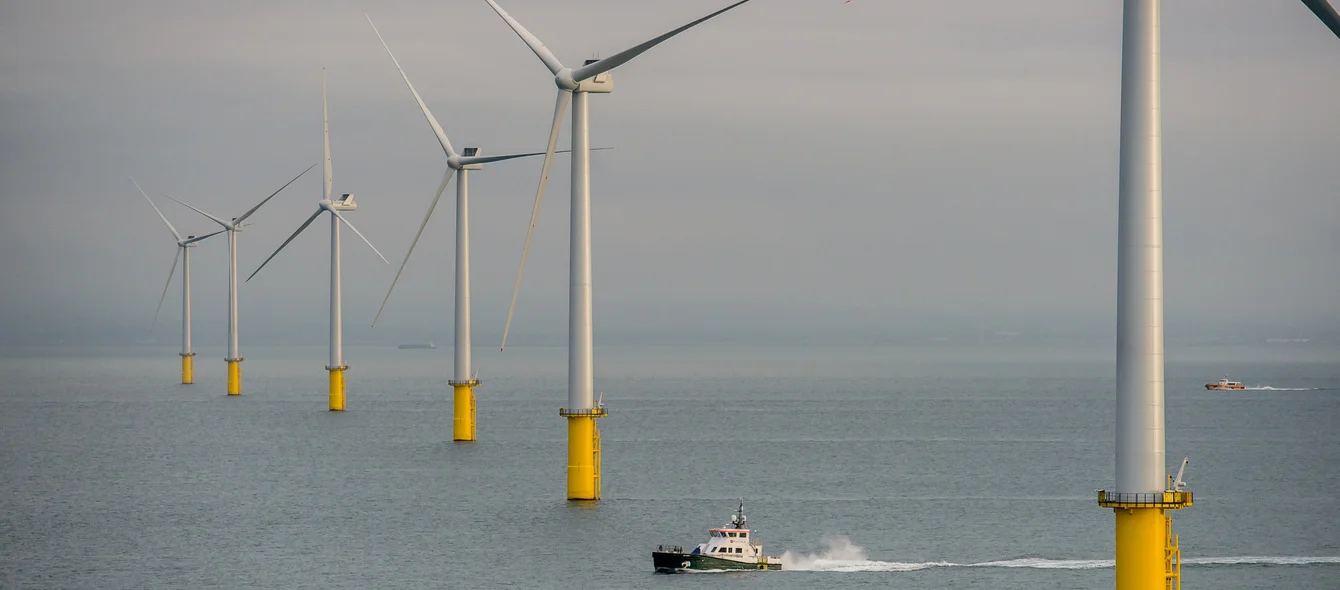In late August, the Crown Estate, the government organisation which manages the seabed rights around the UK, completed the plan level Habitats Regulations Assessment (HRA) for eight wind farm extensions, progressing seven of the proposed projects.
Together these promise to deliver up to 2.85 GW of new capacity as each wind farm can potentially double in size, according to the Crown Estate criteria
2.1 GW of new offshore wind capacity was added in 2018 in the UK – a record year and enough to power 2.3 million UK homes all year round, according to industry body renewableUK.
Betting big on offshore wind
The UK government is betting big on offshore wind to provide much of its new renewable energy and extending existing wind farms looks likely to be a key means of boosting capacity at low cost.
According to the UK’s Committee on Climate Change up to 75 GW of offshore wind could be required to meet the government’s net zero carbon target by 2050, up from just over 8 GW installed at the end of 2018 and a current target of 30 GW by 2030.
Cost-effective option
From costs of over £120/MWh for wind farms under the Renewables Obligation scheme, more recent offshore projects under the Contract for Difference (CfD) mechanism have seen awards at below £60/MWh for developments such as Hornsea 2 and Moray, which will be delivered in 2022/23.
The sharp drop in costs bodes well for plans to extend existing offshore wind farms.
Extension projects take advantage of the technological gains made since the original installations were made. They benefit from existing infrastructure, real life experience of working on site, earlier geological and environmental studies and direct experience of the wind resource through existing wind turbine performance.
However, extensions still have to go through rigorous new planning applications and assessments.
The plan level HRA assesses the possible impact of proposed wind farm extensions on relevant nature conservation sites of European importance. Developers now have to complete site specific environmental impact assessments before seeking planning consent through the statutory planning process. The project developers will then be able to bid in future CfD auctions.
RWE Renewables is set to play a lead role in this area as the renewable energy assets of E.ON and innogy are brought together via the asset swap transaction between E.ON and RWE announced in early 2018.
On closure of the transaction, RWE Renewables will have stakes in four of the seven projects seeking extensions:
- Greater Gabbard (innogy – 2013)
- Gwynt y Môr (innogy – 2015)
- Galloper (innogy – 2018)
- Rampion (E.ON – 2018)
Together, these projects have existing capacity of 1.833 GW.
Building scale
The wind farm extensions will also play a key part in building the industry scale necessary to meet the government’s climate change targets. Scale is crucial to delivering further cost reductions, making offshore wind ever cheaper. Not only are offshore wind turbines becoming larger and more efficient, but a larger UK offshore wind industry with a proven track record de-risks future projects.
Wind turbines: Increasingly larger, increasingly more efficient
The graph illustrates that in the last 20 years wind turbines have not only become bigger and bigger, but also more and more powerful. (Source: EnergyUK: "Offshore Wind Market Development and Cost Reduction Background")While wind farms have zero fuel cost, they are capital intensive. The cost of raising finance falls as lenders become increasingly confident that projects will be delivered on time, at cost and perform as expected. According to energy trade association Energy UK, a drop of 1% in the weighted average cost of capital is equivalent to a 6% reduction in the Levelized Cost of Energy for offshore wind.
Given the pre-existing knowledge of the sites, wind farm extensions look like a low risk and therefore low cost option for the UK.
